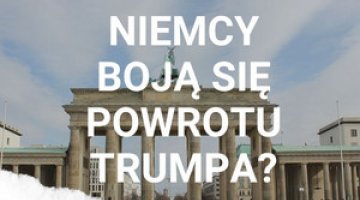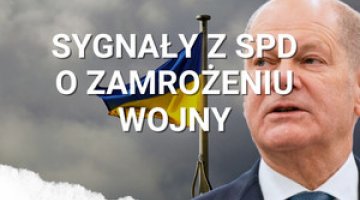Engaging the private sector. Germany’s plan for the reconstruction of Ukraine

Berlin believes that the reconstruction and post-war development of Ukraine should involve not only enhancing the country’s integration with the EU market and implementing institutional reforms but also increasing engagement by the private sector. To this end, a broad range of instruments are to be provided, including investment guarantees, export insurance, advisory support, and the coordinated efforts of public agencies and business organisations. According to the German government, the reconstruction of Ukraine is envisioned as an economic undertaking, largely free of political dilemmas, including the potential confiscation of Russian assets to finance reforms in Ukraine.
On 10 April, the federal government published a ‘Key Issues Paper’ (Eckpunktepapier)[1] outlining Germany’s ideas for the reconstruction of Ukraine. This document was created in connection with the international Ukraine Reconstruction Conference (URC) which was held in Berlin on 11–12 June, with the aim of organising non-military support policies for Kyiv and planning the process of the country’s recovery from damage caused by the war. The document is also the result of agreements made with the Ukrainian side during a bilateral meeting held in Berlin on 16 February.
The overriding goal of the German government’s initiative is to involve the private sector in the reconstruction process, as explicitly stated in the document’s sub-heading. Berlin believes that one of the URC’s objectives is to ensure that participating countries offer as many tools and cooperation platforms as possible to encourage companies, institutional investors, philanthropists, foundations, and others to become more involved. The German concept is outlined across five areas and 15 specific actions, serving as a reference point.
Firstly, prioritising effective coordination
The package of proposals begins with the recommendation to align individual tools of state support for companies, German development policy instruments and various bilateral, European, and multilateral funds that can be utilised in the reconstruction process. To this end, there are plans to hold regular meetings of state secretaries from key institutions, including the ministries responsible for foreign affairs, finance, economy, climate, and development cooperation. Additionally, the international economic promotion agency Germany Trade & Invest (GTAI), which supports public trade and investment, the chambers of industry and commerce (AHK), and the Agency for Business and Economic Development (AWE) are expected to work closely together; one of the key goals of their collaboration is to integrate information on the proposed tools into the Ukraine Business Guides.
The coordination of the German institutions’ efforts is also intended to leverage the EU tools available through the Ukraine Facility to mobilise private capital. A total of €50 billion has been allocated to this instrument for 2024–2027, including €7 billion earmarked for investment support. Another key priority is streamlining the flow of information between the private sector and international donors, which will be facilitated by creating a separate forum involving company representatives within the Multi-Agency Donor Coordination Platform (MDCP). A relatively small portion of the coordination efforts will focus on public funds, aiming to strengthen cooperation between German institutions and major financial entities such as the European Investment Bank (EIB), the European Bank for Reconstruction and Development (EBRD), and the World Bank, which have greater capacities for financing critical infrastructure than the German public bank KfW.
Secondly, enhanced incentives for companies
The second pillar of the government’s plan is to offer increased support to private companies, thereby encouraging their involvement in the reconstruction of Ukraine. For example, the document proposes the financial strengthening of the Ukrainian Business Development Fund (BDF), a tool designed to assist the SME sector. The BDF was established at the initiative of KfW in 1999 and has since provided interest subsidies for loans granted to companies by Ukrainian banks. The Business Development Fund is expected to become the Ukrainian equivalent of KfW.
The government also aims to facilitate access to export and investment guarantees for German companies. Initial steps to this end were taken in 2023, when the procedures were simplified and the pool of funds was increased. Since the beginning of the war, German companies have received 30 investment guarantees, and their total number (including those granted before the war) now stands at 46, covering a sum of €340 million. The second widely used tool, export insurance, reached €170 million in 2023. Currently, the minimum equity participation of companies in these instruments is 5%, but the government is considering reducing it to 2.5%. A similar reduction might be possible in the investment sector. However, Berlin intends to share responsibility with international institutions, and a new tool in this area is likely to be created.
The promise of lifting capital flow restrictions, which companies cite as a major obstacle to their operations, is highlighted as an incentive for business. To achieve this, the German government plans to engage in dialogue with Ukraine’s central bank and support the development of additional instruments, such as currency conversion risk insurance for loans (implemented in July 2023), as well as insurance for equity investments in Ukrainian companies. These tools could be significantly expanded, potentially in collaboration with KfW, though it may be necessary to sign an appropriate agreement with Ukraine to facilitate this.
Support will be offered to both German and Ukrainian companies, particularly in the SME sector. The government aims to provide more ‘startup’ capital to investment funds and expand interest rate subsidies on loans. Currently, such instruments, totalling €62 million, are offered by the European Fund for Southeast Europe (EFSE) in collaboration with seven Ukrainian partner institutions. Another source of support will be the Green for Growth Fund (GGF), which is tasked with blending public and private capital in the renewable energy and energy efficiency sectors. Germany also seeks to include an additional guarantee instrument in this group for Ukrainian financial institutions offering business loans.
Another component in the package of ‘incentives’ for companies is the provision of loans to German and Ukrainian businesses through the German Investment Corporation (Deutsche Investitions- und Entwicklungsgesellschaft, DEG). To implement these plans, the government intends to utilise DEG’s subsidiary, DEG Impulse, and the public-private partnership programme develoPPP. Last year, DEG Impulse, and the German Corporation for International Cooperation (Deutsche Gesellschaft für Internationale Zusammenarbeit, GIZ) launched a special competition (develoPPP) for Ukraine worth €21 million. Additionally, the development investment fund ImpactConnect, which offers loans of up to €5 million, was launched in autumn 2023. The government is considering increasing this amount.
Thirdly, incentives for funds and donors
The German government believes there is significant potential in involving institutional investors (such as pension funds), philanthropists, and foundations in the reconstruction plans. One of the proposed solutions in this area is to create a financial instrument that pools funds to support large projects in sectors critical for Ukraine (energy, infrastructure, industry, and agriculture). The primary goal is to mitigate some of the risk for potential investors, thereby serving as an additional incentive, and to provide the instrument with a certain amount of equity capital from public funds.
Discussions should begin within the MDCP regarding the alignment of such a fund with other insurance instruments, such as the Ukraine Recovery and Reconstruction Guarantee Facility (URGF) created by the EBRD or the European Fund for Southeast Europe (EFSE). Berlin also aims to help mobilise private foundation funds and small individual donations for the reconstruction effort. To achieve this, it plans to announce appropriately tailored initiatives through the Reconstruction of Ukraine platform and utilise crowdfunding.
Fourthly, Ukraine’s reforms
From Berlin’s perspective, creating a business-friendly environment in Ukraine and accelerating the country’s integration with the EU are crucial for engaging the private sector.[2] This will require a comprehensive alignment of Ukrainian regulations with EU standards, with particular emphasis on market-oriented reforms and effective anti-corruption measures. Germany intends to apply the principle of conditionality to Ukraine’s access to EU support funds. Each tranche of funding must result in specific reforms, the removal of existing trade barriers, improvements in infrastructure quality and energy efficiency, as well as advancements in the rule of law and public administration.
It is crucial to integrate Ukraine into the EU’s policy on trade in raw materials and rare earth elements (the Critical Raw Materials Act) as well as the European security strategy. This requires the coordination of political and economic initiatives at both the bilateral (between Berlin and Kyiv) and EU levels.
Fifthly, Russian assets as a marginal source
The German government is considering the use of frozen Russian assets abroad for the reconstruction of Ukraine. However, the document makes it clear that a common European stance on the potential appropriation of revenues from the management of the Central Bank of Russia’s assets and their subsequent allocation must be developed. To this end, consultations will be held with EU member states, the European Commission, the European Central Bank, and the governments of the G7 countries. However, the full confiscation of assets, which countries such as the US have not yet ruled out,[3] is not considered an option at this moment.
Conclusions
In the Eckpunktepapier, Germany systematised its plans for the reconstruction of Ukraine, outlined key tools, and clarified its expectations for the upcoming URC discussions. The emphasis on private capital engagement is a major element of the German strategy. Berlin believes that, since the vast majority of investments in developed economies are generated by the private sector, a similar development model should be applied in Ukraine.
Given the scale of reconstruction, infrastructure challenges and the need for rapid decision-making regarding the allocation of capital, public funds could be used to a greater extent. However, Germany fears that discussions about a potential common fund, for example at the EU level, could lead to speculation about a new mechanism financed by debt incurred by the European Commission, similar to the COVID-19 recovery fund. The German government has repeatedly emphasised that the pandemic situation was an exceptional case and that the issuance of joint debt simply does not align with the agreed integration framework. An additional argument against the significant use of public funds for the reconstruction of Ukraine is the budgetary constraints in Germany, specifically the constitutional debt brake.[4] The SPD-Green-FDP coalition currently faces the need to make budget cuts and negotiate a difficult budget for 2025. The least desirable outcome, a year before the elections, is a public debate about billions of euros in public funds being allocated for the reconstruction of Ukraine.
Given the expansion model Germany typically employs in foreign markets, it is unsurprising that it wants to focus on the engagement of private business. It is natural for an economy where the value of exports exceeds 40% of GDP to have an extensive array of advisory institutions, insurance companies, funds, and guarantee mechanisms at its disposal. This infrastructure is already being utilised in Ukraine, but the reconstruction process is set to significantly enhance its importance. It is difficult to imagine any other European country being capable of committing similar resources in this field or drawing from comparable experience in shaping international supply chains. Germany already enjoys substantial advantages from the outset, partly due to its encouragement of Ukraine to create a business support model similar to the German one. Therefore, the process of organising a ‘Ukrainian KfW’ is not coincidental, but rather reflects a systemic approach to reconstruction.
The choice of private business as the primary driving force behind Ukraine’s recovery from war-related destruction at least partially resolves the dilemma associated with the potential use of Russian assets. Business circles are unlikely to advocate for such a solution. German firms are concerned that the confiscation of capital could harm their future plans to return to Russia or even affect their investments in China, which could be jeopardised by possible compensation claims from Moscow.
Furthermore, the financial sector argues that seizing assets would disrupt the development of the European capital market by making non-European investors concerned about the security of their investments. These arguments are convenient for the government, as they allow political issues to be kept out of the spotlight. Berlin believes that negotiations will ultimately end the war, so full confiscation would mean losing a potential bargaining chip in talks with Moscow and Beijing. There is also speculation that the almost certain legal disputes over the seizure of Russian assets could reopen the issue of German war reparations. Therefore, Germany is opting for the least risky solution, which is to take over the income from the invested assets while leaving any further steps toward a compromise to the international level, however unlikely this compromise may be.
[1] Eckpunktepapier – Wiederaufbau der Ukraine. Mobilisierung des Privatsektors für den Wiederaufbau der Ukraine, Die Bundesregierung, 10 April 2024, bmz.de.
[2] S. Matuszak, ‘A key partner. Ukraine–EU trade in 2023’, OSW, 4 March 2024, osw.waw.pl.
[3] J. Graca, F. Rudnik, ‘The new US supplemental bill on Ukraine and the threat to confiscate Russian assets’, OSW, 24 April 2024, osw.waw.pl.
[4] M. Kędzierski, S. Płóciennik, ‘Germany: the Constitutional Court deprives the government of €60 billion earmarked for transformation’, OSW, 17 November 2023, osw.waw.pl.




